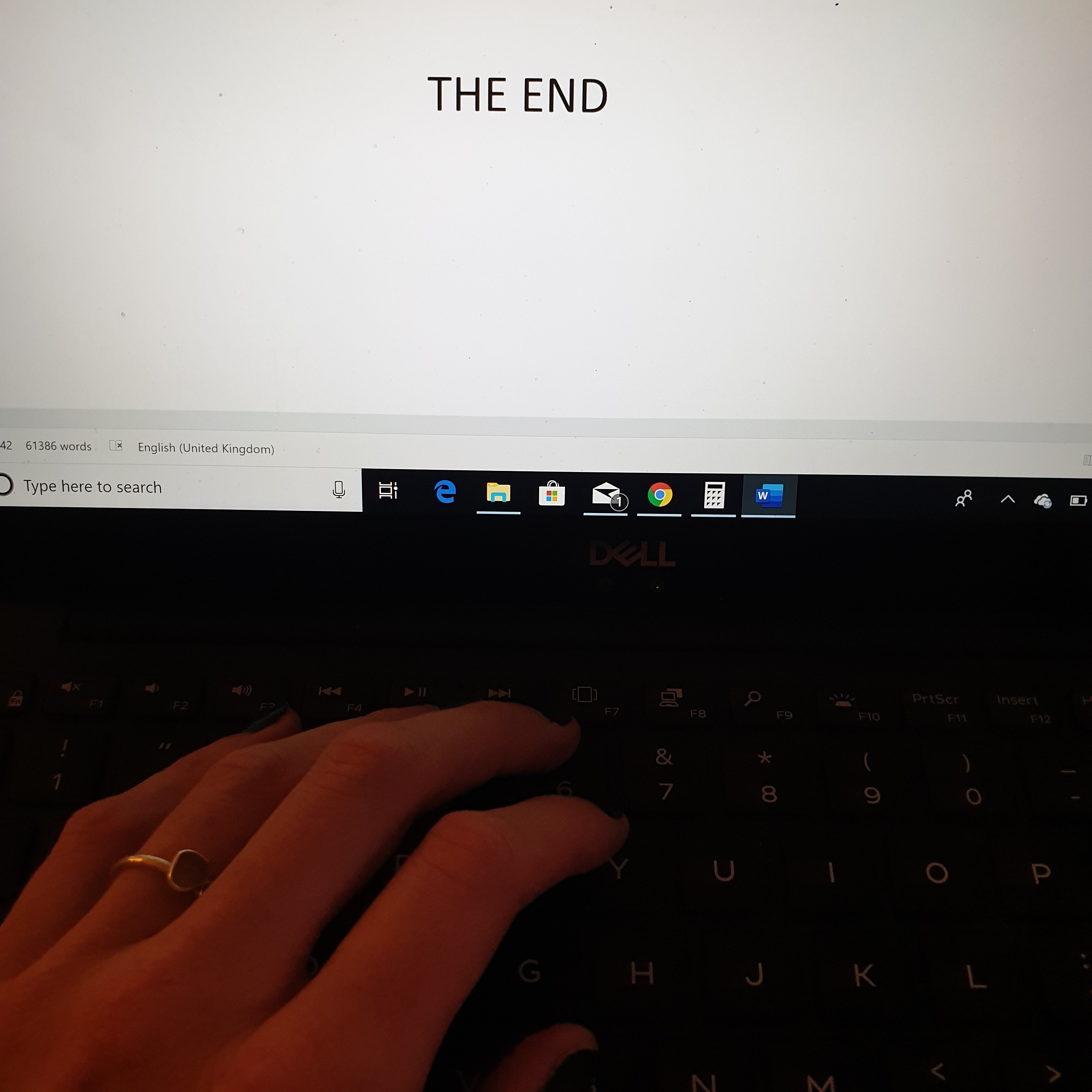‘The End’ – when I wrote these words I:

A. Cried
B. Did a cartwheel in a field
C. Drank prosecco on a school night
Draft one complete. Now what? No, seriously, now what?!
About 20,000 words too long, my characters changed names every couple of chapters and I’ve spent about three pages describing a bath.
I floated in the ‘I’ve finished’ bubble for a short while. I had a break from it all, got married, went on holiday, came home and opened my Word document again…
Oh God.
What. A. Mess.
‘A dirty draft’, ‘a brain splurge,’ or (my favourite), ‘a vomit draft’… I learnt these delightful phrases when frantically googling for the ‘what next’ answer.
I have to say, ‘vomit draft’ is the one I identify with most. I don’t know about you but it invokes the most relatable imagery. My messy words and sentences spewing all over the page in one unpleasant soup.
Am I putting you off your dinner? Sorry.
So… if my first draft was really my vomit draft, does that make my second draft my first? Then what about the discarded 15,000 word draft? What was that? My burp draft?
Actually, does it really matter?
I took ‘what next?’ advice from #WritersOfInstagram, scrolled through online blogs and searched the Writers’ and Artists’ Yearbook – all very helpful stuff and great advice but I actually ended up doing something bizarrely different.

I quickly established that my next draft would be a re-write, not an edit. My plot was there… just about visible beneath a sea of over-described-everythings. I knew a rewrite would be better for my story in the long run. And so, this is what I did:
- I read each chapter and wrote a short summary.
- I bullet pointed all action points, locations and characters. This way I could see my entire book at a glance.
- I used one post-it note per chapter for ‘general thoughts’ – these were for PLOT only. With a re-write ahead of me, typos and jumbly sentences weren’t important at this stage.
Here is the best bit. With my ‘Draft Two Plan’ now complete, I have started to re-write every chapter and then compare it with my plan… I do this by writing an analysis document… yes, an analysis document – I effectively write a short essay after every chapter.
By the way, I’m not telling you all of this because I want you to adopt my method – far from it! It is laborious and long-winded. To be honest I’m not really sure why I’m telling you because my ultimate advice will be to ignore it all.
I blame the English degree for all of the ‘analysis’ – but do you know what? It works for me.
If you are at the end of your first/vomit/dirty/whatever draft, it’s okay to muddle your way through the next bit. You’ve already muddled your way this far.
Don’t feel bad if you try to adopt someone else’s workflow and it doesn’t do the trick. Find your own way, try it. If that doesn’t work, find another way, try it.
You’ve done the hardest part. You’ve written all of those words. You have your springboard.
As for me, I am alarmingly close to ending draft two.
I will probably type ‘The End’ and cry again, though I may try a back-flip this time and will most certainly crack open a bottle of something stronger.
And then, inevitably, I will ask myself:
Now what?
I’ll get back to you on that one…
Kayleigh is a Writer and Director at BBC Children’s. She writes and produces television and audio content and reviews book submissions for CBeebies Bedtime Stories. Kayleigh took the plunge into attempted authorship and is working on her middle grade debut novel. Follow her journey on Twitter and Instagram #KKsDiary
I am writing a novel in the English language. However members of one family speak Welsh as their first language. Should I always write their dialogue in Welsh (with explanations regarding their conversation), or just in the first chapter?